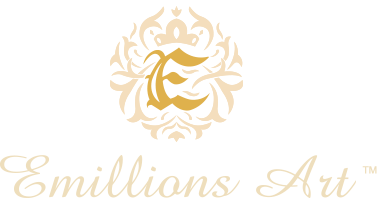If you fall into the category of “millennial” (yes, we all hate labels, we know), you are in the age demographic that is about to receive the largest intergenerational transfer of wealth—ever. A study from the Boston College Center on Wealth and Philanthropy projects that $59 trillion is expected to be passed down to heirs through charities and taxes between 2007 and 2061. The study said heirs will receive $36 trillion over that period. Your generation outspends all other generations by a factor of 3. But you also have a higher mean income, more fiscal autonomy and a greater sense that money is a tool for participating in life as a rich experience. These are values woven into the fabric of a generation that is influencing contemporary culture in amazing ways.
 With the Great Recession of 2008, there was a new concept introduced to millennials that hadn’t been seared so deeply into the forefront of the social consciousness since 1929: financial equities investments—such as common or preferred stock—aren’t a sure bet. Sure, there has always been risk associated with putting all of your eggs in the Wall Street basket, but now, with the growing wage gap between the working class and CEOs, the ferocious and seemingly unending appetite of human greed and waning trust in financial institutions, young cultural creatives are primed for a new way of seeing things.
With the Great Recession of 2008, there was a new concept introduced to millennials that hadn’t been seared so deeply into the forefront of the social consciousness since 1929: financial equities investments—such as common or preferred stock—aren’t a sure bet. Sure, there has always been risk associated with putting all of your eggs in the Wall Street basket, but now, with the growing wage gap between the working class and CEOs, the ferocious and seemingly unending appetite of human greed and waning trust in financial institutions, young cultural creatives are primed for a new way of seeing things.
A recent study by the Investment Company Institute found that “74% of those under the age of 35 stated that they were unwilling to take above-average or substantial risk with their investments.” In another ICI study of investment preferences, those age 22 to 32 said that they chose to put 75 percent of their retirement savings in cash and bonds and only 25 percent in equities.
What does this add up to?
The Millennial generation will comprise 50% of the workforce by 2020. Presumably, millennials will be amassing larger quantities of wealth and with relative hesitance to invest using traditional methods and practices. To look at it another way, this risk-averse outlook is a great opportunity to find new ways to stockpile savings.
Enter: fine art investing. In stark contrast to stock portfolios, buying fine art has long been a sound investment. Generally speaking, values rise during economic downturns, demand always outpaces supply and there is no end to the opportunities to acquire works by established and emerging artists alike. Now, as fine art becomes more and more a part of the cultural mainstream, it makes sense that younger audiences are increasingly art-curious.
The discerning novice, with a few college level art appreciation courses under her cap, could begin curating a collection in no time at all.
But, where to start?
Experts will tell you that there are many “shoulds” on which you must be educated before you begin buying art. They will imply there are certain rules of etiquette that exist to protect the integrity of the fine art market place and preserve art’s status as an elite pastime for elite people. And too be sure, there is something to be said for an appropriate reverence and respect for fine art that sets it apart from other mediums.
You may be made to feel as though you are a fish out of water when you set foot in galleries and attend auctions. And while there is always more to learn, the reality is, you already know enough to set out on your journey as a collector.
You know you.
 You know better than anyone else what you like, what gets you excited. You know what motivates you and gets you out of bed before the alarm. You have seen enough and experienced enough to recognize when something strikes a chord, piques your curiosity and grabs your attention. It’s called authenticity and it’s a quality that seems to be a dwindling commodity in today’s consumeristic marketing culture.
You know better than anyone else what you like, what gets you excited. You know what motivates you and gets you out of bed before the alarm. You have seen enough and experienced enough to recognize when something strikes a chord, piques your curiosity and grabs your attention. It’s called authenticity and it’s a quality that seems to be a dwindling commodity in today’s consumeristic marketing culture.
Authenticity is a funny word because everyone instantaneously knows what it means, and they all think it means something different and in many ways, they’re all correct. To one, “authentic” might be defined as “visceral and gritty”. To another, it may suggest well-defined aspirations and a certain air of refinement. But the reality is, only you can know what you connect with and why it turns you on.
In the beginning, investing in art is a journey of self-discovery. Go to as many gallery openings and art events as possible. You can learn a lot just by watching how other, more experienced curators and collectors interact with the environments, artists and brokers. American artist and sculptor Kelly Borsheim says, “Many people simply do not trust their own taste. Having someone else—other than the artist—tell them the work is good often gives them permission to buy.” Over time, you will really begin to uncover your unique art-worldview and depth of knowledge and appreciation.
Remember that investing is as much in the intuition as in the science. While you discover and understand your fine art preferences, others my endeavor to force their preferences upon you. But there is no such thing as transferable preference. Your guiding light needs not to be what someone else tells you is great art, but a set of clearly defined goals:
- Evaluate your investment capacity and lay out a schedule of planned purchases.
- Based upon your desired revenue goals, decide what return you are hoping to receive from your investment.
- Seek out artists and mediums that have a proven track record of value appreciation.
As you immerse yourself in the world of fine art collecting, you will begin to find invaluable education and the confidence to make good decisions. One more important thought: take your time. Just like stocks and other equities, fine art investing is a long play. You will make some great discoveries, you’ll make some mistakes here and there, and that’s OK—don’t let those mistakes intimidate you.
Art is very much like that tricky word, authenticity. Art can be viewed by many and interpreted differently be each. Art can invoke a host of emotions and responses. And ultimately, art is a moment in time—the moment captured by the artist, and now, the moment you first saw it. It has been said that in the beginning, collecting art is like a middle school dance: nobody knows how much fun they’re allowed to have. It takes time and practice to find your curator’s wit, but when you do, art collecting can be highly enjoyable.



